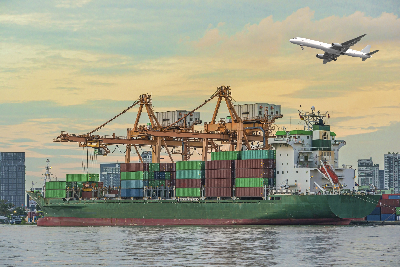With the onset of the Covid-19 pandemic, international air traffic collapsed. For some European countries, air transport is the main mode of transport for their exports. Despite its higher cost, air transport is also a widely used mode of transport for products with a high value relative to their weight, such as precious stones, electronic components and pharmaceuticals. The same is true for intermediate products that are at the heart of global value chains. Yet, the more air links countries have with each other, the more they trade: the share of overall trade between two countries that have more than 103 air links between them is 9% higher than that of countries that share no direct air links; and for trade that is transported by air alone this figure rises to 15%. In the case of goods that are not shipped by air, the effect is also substantial (about 8%) because business travel supports trade. If travel restrictions continue, or if the air transport sector is included in international commitments to reduce greenhouse-gas emissions, air transport could remain disrupted and, with it, international trade. Diego Botero Garcia, Ariell Reshef, Camilo Umana Dajud
>>> |
- The Future of Money - How the Digital Revolution Is Transforming Currencies and Finance
Webinar, 20 January 2021 - "Corporate Subsidies by China, the European Union and the United States". Webinar with Simon J. Evenett, Professor of International Trade and Economic Development, University of St. Gallen
Webinar 9 December 2021
- EQCHANGE annual assessment 2021
Carl Grekou - MaGE 3.1: Long-Term Macroeconomic Projections of the World Economy
Lionel Fontagné, Erica Perego, Gianluca Santoni - Poor Substitutes? Counterfactual methods in IO and Trade compared
Keith Head, Thierry Mayer
- Fewer Planes Means Less Trade
Diego Botero Garcia, Ariell Reshef, Camilo Umana Dajud - Looking Ahead to 2050: Where are the Current Dynamics Steering the Global Economy?
Lionel Fontagné, Erica Perego, Gianluca Santoni
Labor Market Integration, Local Conditions and Inequalities Evidence from Refugees in Switzerland. Online seminar series on the Economics of Migration
February 16, 2022
Presentation of the IMF's report "Recovering from the pandemic and transitioning to a better future: France in the European context"
March 8, 2022
21st Doctoral Meetings in International Trade and International Finance
April 28 - 29, 2022
| EQCHANGE annual assessment 2021: an overview of exchange rate misalignments for 2020 Despite the large shock that represented the Covid-19 pandemic, the global configuration of currencies misalignments did not undergo any significant changes except for few EMEs that registered important movements. Among advanced economies, the picture was broadly unchanged. The US dollar registered a slight increase of its overvaluation; the British pound, the Canadian dollar and the Japanese yen registered an upward movement that led to the reduction of the undervaluations. The euro area is again featured with various situations with undervaluations prevailing in Germany, Ireland and the Netherlands while Belgium, France, Italy were close to their equilibrium. In EMEs, the Brazilian real registered the largest swings against the US dollar and have consequently seen a dramatic increase of its undervaluation. The Turkish lira continued its plunge against the US dollar and also increased its undervaluation. In contrast, the Chinese renminbi remained relatively stable and appeared broadly in line with its fundamental value. Carl Grekou
>>> |
The presentation of Eswar S. Prasad's book "The Future of Money - How the Digital Revolution Is Transforming Currencies and Finance" explains that the world of finance is at the threshold of major disruption that will affect corporations, bankers, states, and citizens. Will cryptocurrencies evolve unpredictably as global corporations join the game?
>>> |
- Contact us
- Our other sites
 |
ISSN: 1255-7072
Editorial Director : Antoine BouëtManaging Editor : Evgenia Korotkova












